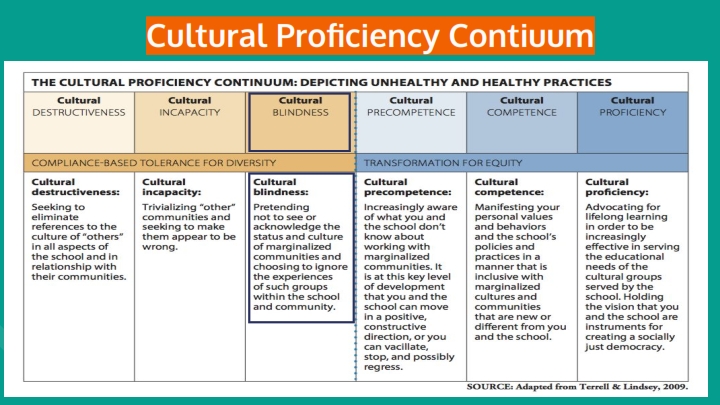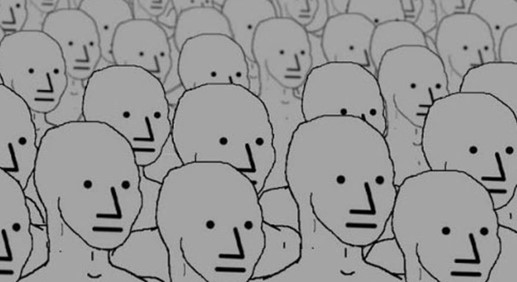A debate over Critical Race Theory and associated concepts has been sweeping our nation. Proponents of curricular changes have suggested that Mariemont students could benefit by exposure to foreign cultures, and that sensitivity to others is highly desirable. In this manner of thinking, tolerant habits among our sons and daughters should always be supported. Why would anyone question the enhancement of cultural awareness or the motives of our school?
These are fair questions.
However, a close and informed look at some of the educational materials recently introduced into Mariemont Schools reveals that they are not fundamentally about tolerance or learning about other cultures. To see this fact requires an awareness of the difference between classical liberal values versus inherently destructive values now being advanced via cloaked or counterfeited forms. We must be mindful of semantic shifts by the radical social activists pushing Critical Theory. (See also: The Language of Social Justice: An Introduction).
For example, “equality” has given way to “equity.” “Privilege” is now a catch-all term employed to shame people for the work their parents and grandparents have done to build their futures. The Critical Theorists give new meanings to commonplace words that until recently we thought we understood. Controlling language is a well-established tool of the Marxists. With shifts in meaning, we may easily become complicit, albeit unintentionally or unknowingly, in promoting their agenda. Why would someone question “social justice” or “equity” or tolerate “privilege?”

When teaching, the content of stories matters. Consider the classic, The Lion, the Witch, and the Wardrobe, ostensibly a fantasia about children who enter a closet and find a magic lion. But C.S. Lewis conveys much more. He communicates inherently Christian concepts about God, redemption, justice, love, and goodness. Beyond semantic shifts in commonplace words, our educators are infusing themes of the Critical Theorist into the stories our children read in the classroom today. We hear of our elementary grade students coming home telling parents that the police are out to kill black people. A story is never just a story.
In classic Marxism, morality – the very idea of right and wrong – is understood as a tool for subjugation. The job of the Marxist thinker and leader is to grasp the direction of history, and to develop society by exploiting its “tensions” or “contradictions.” His job, in other words, is to agitate for conflict, and a big part of this job is discerning which groups might serve as revolutionary “agents.”
Critical Theory moved away from the idea that these social cleavages had to be economic, and instead, over time, began to substitute racial or sexual groups for class groups.
In both classic Marxism and the neo-Marxist movement of Critical Theory, what we today call “sociological observation” substitutes for moral and political discussion. To the Critical Theorist it is a harmful illusion to believe that you possess reliable independent judgment as a regular person. The Critical Theorist interprets the workings of History. The aggrieved and oppressed have a job to do in pressing their complaints. But neither the aggrieved nor the “aggressors” can act outside of their materially determined roles. A person can just learn his place and do his job: fight the oppressors or surrender accordingly. With the Critical Theorists providing direction, the role of education is to implant these views, the earlier the better.
It should be obvious that to be successful, of course they are not going to tell you that they are doing this, and of course they are not going to tell you they are teaching you Critical Theory. Their job is to plant the correct seed concepts in your children’s minds and reap the crop when they have grown. Open debate about oppressors and victims would be bad “praxis,” an educational term referring to the process by which a theory, lesson, or skill is enacted, embodied, or realized.
Three troubling elements inherent in works influenced by Cultural Marxism and Critical Theory permeate the literature (in academia) and then structure the lessons (in our schools) designed to indoctrinate the student. These elements have recently been infused into Mariemont curriculum. “We are not teaching CRT” does not hold water as an argument.
Please carefully consider these elements as a parent or a grandparent. Is this really what I believe in? Is this what I want for my kids?
Inversion of Normal Moral Feelings
Do you love your children? If someone were to ask you that question too pointedly, you would probably take offense. How dare you!?
Some behaviors are generally taken as signs of parental care and affection. One feature of parental love is that it involves a kind of favoritism. It would certainly seem odd if you sent your own children to an orphanage and rented their rooms out to strangers, on the ground that it was openhearted of you to do so. Of course, it is expected that you will care for your own child to a greater degree than your neighbor’s, and that you will probably look out for the neighbor’s kid more than you would for someone else’s across town, barring some other relation.
Love and care for your child correlate with proximity as an obvious and commonsense truth, a fact of nature, across cultures. Put simply, there is nothing wrong with the fact that you favor your own child first. It is you, after all, who will have to answer for your child’s condition.
Through close contact and care, you bond with your child, you come to know and love a unique individual.
Notice, first, that the course materials we are criticizing involve continual training in the notion that expressing love of that which is foreign is what makes you good, and that to favor your own is bad. This notion requires an inversion of natural parental instincts and feelings. Notice, second, that this principle is supposed to be taken as a duty by some people, but not by all.
While the first point is counter to the fundamental relationship between parent and child, the really troubling move, from liberalism to Marxism, occurs with the second point — the differential application of the first principle. With Critical Theory-influenced education, it is the job of some people to favor others, it is the job of others to favor their own.
What? Really? That makes no sense. Yes. This is the lesson being taught. This is what makes Critical Theory-informed curricula anti-white, anti-Christian, and anti-American.
How could someone say that? You must be making this up. No one believes that. We all just want equality and fairness.
No, not all of “us.” In fact, if you take a close look at the curriculum, you will notice that it tells you up front that equality is a ruse, a manner by which some groups oppress others.

The Substitution of Victim Narratives for Civics
In Critical Theory, your task is fundamentally determined by the past actions of your racial, class, or gender group, the constraints of which you cannot escape, and for which you must atone (provided you are in the “dominant” group.)
Traditionally, a civics education was supposed to form people as reasoning contributors to their community. Tying the value of people’s thoughts and actions to their membership in older identity groups would have been considered counterproductive.

A reasonable, thinking person might ask whether a certain picture of historical victimization is true, false, oversimple, or misleading. Such questions are a hallmark of traditional, liberal education. We believe that questions and open debate are good, even essential. By contrast, it is imperative to the Critical Theorist to avoid this problem altogether; there can be only ONE picture of History:
A. History is “progress.” Progress is defined as the removal of a prejudice (via another semantic shift).
B. History was written in the past only to whitewash misdeeds. Now, it is said, we will have “Real” History.
This approach is rigidly ideological, inflexible, and most importantly, inhumane. By adopting this view, a person accepts that there must always be a group assigned the role of being the holder and executor of the prejudice, i.e., someone who is “privileged,” and against whom education must be directed.
Additionally, (A) and (B) above are gross malpractice in a basic academic sense. They discourage or prevent students from asking interesting questions of a sort that permeate the writing of actual history.
This brings us to the third feature of Critical Theory, which is meant to prevent you from asking such troubling questions.
Appeals to “Experts” Replace Humane and Personal Relations
When you have children, whose task is it to raise them? When you interact with your neighbors, whose job is it to produce good feeling and common involvement in the community?
If you believe the answer to these questions is “mine,” to the Critical Theorist you have a problem. You also have a problem if you think that a parent or educator can undertake these tasks without the “right” technical advice, and without being subject to special methods and criteria. Instead, social scientists have done this work for you, and can properly advise you on fitting conditions for human relations.

Most especially, if you have a background among “privileged” groups, then it is unlikely that you can see your own biases. You need some expert to uncover them for you.
Of course, if someone expressed to you these concepts outright – in a casual conversation – you would probably ask him to get lost (or worse!) But yet, Critical Theory licenses an entire economy of scolds – people who are certain that they are more sensitive than you are. You are told that it is a matter of education, science, and sophistication.
For this reason, this final component of Critical Theory is probably its most powerful. It appeals to the boundless human capacity for vanity and self-congratulation. “You are biased and backward, but I see it.”
However, a bit of honest reflection should reveal that the entire ideology is a recipe for conflict, a moral version of a pyramid scheme. Is this really what you want your children to believe: that their disposition to prejudice is their highest and most essential quality? That their sensitivity to racism makes them superior to others?
Recently we are seeing the influence of these experts, manifested in an obsessive fixation on anti-racism in some schools. However, we know that virtues of kindness, fairness, courage, temperance, forbearance, generosity, respect, etc. do not inherently, or always, or by necessity, have something to do with racial or other identity groups. We reject Critical Theory as pessimistic, inhumane, unreasonable, untenable, and destructive to our children.
Rejecting critical theory-based curricula in no way implies that we should avoid the examination of morally difficult matters in our nation’s past. Rejection does not suggest that morally difficult matters about our country’s past should be glossed over. The opposite is true. What we reject is the idea that we should indoctrinate our children through a monolithic and inflexible moral-sociological framework.
We ask that you look carefully at the various school district materials gathered on this website and ask some hard questions. Why? Because ultimately, we reject the idea that the future of our children is a matter of technical expertise. Rather, we ourselves retain moral responsibility for them.
We sincerely desire your thoughtful participation in that common enterprise. Watch for future content as B4MS points out these three elements of Critical Theory in Mariemont curriculum and in the materials provided by the administration in professional development sessions for our teachers.
